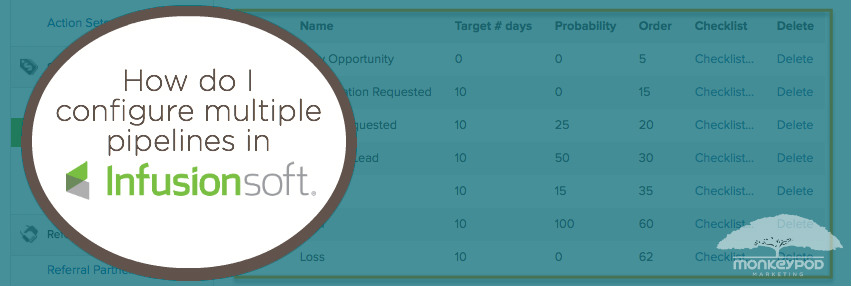The opportunity module in Keap (formerly Infusionsoft) kind of flies under the radar for most businesses – if they know it’s there, they often don’t know what it’s for, or how to use it in their business. (And if that sounds like you, that’s okay!)
In a nutshell, the Opportunity Pipeline is a tool designed to help you and your team track prospects through a process. Normally this is a sales process, and most often, I see people use this tool when their sales process is largely over the phone, offline, or heavily manual.
As much as I love automation, some things just can’t (or shouldn’t) be automated. And if you’ve got a process in your business that is heavily manual, but you’re looking to improve tracking and instill accountability into that process; then the Opportunity Module might just be a good fit.
But once you start using (and inevitably loving) the Opportunity Module, one of the first questions you might find yourself asking is “Can I set up multiple pipelines?”
The answer is Yes, and it’s easier than most people think.
First, Some Context
Let’s start with some definitions:
Opportunity: In Keap, an opportunity is a record type. Just like you have contact records or order records, an opportunity record has its own ID, and it’s own fields, and it’s own data. You can think of an opportunity as a vehicle for tracking someone through a process. Not every contact will have an opportunity tied to it, but every opportunity will be connected to a contact. (Learn More)
Pipeline: The pipeline is the set of stages through which you’ll progress your opportunities. It’s a tracking tool to help you see where your contacts are in your process (sales process, or otherwise). You’ll define the stages for your business, and as you move opportunities from stage to stage, Keap will offer reports to help you identify bottlenecks or areas where you might be able to optimize.
Okay, so opportunities are the vehicle. They move from stage to stage. And are connected to a contact. And the stages they’re moving through, that’s your pipeline. Ya with me?
And Now The Problem
Cool. So once you start setting this up, and defining your stages, you might recognize that your business has more than one process you hope to track. And if that’s the case, then you might want more than one pipeline.
There are a handful of scenarios where you might be reaching for more than one pipeline, but here are two examples:
And…
I’m sure there are plenty of examples, but the basic premise is that you may need more than one pipeline. And, by default, Infusionsoft only has one pipeline. You can’t clone, and create a separate pipeline with its own settings, or anything like that. Bummer, right?
And Finally the Solution
So, technically the Max Classic version of Keap only allows you to set up one pipeline. All of your stages WILL be part of the same pipeline. But don’t let that phase you, we just have to shift our thinking a little bit.
If you’ve defined your sales pipeline already, or even if you’re just looking at the defaults, you are probably looking at something like this:
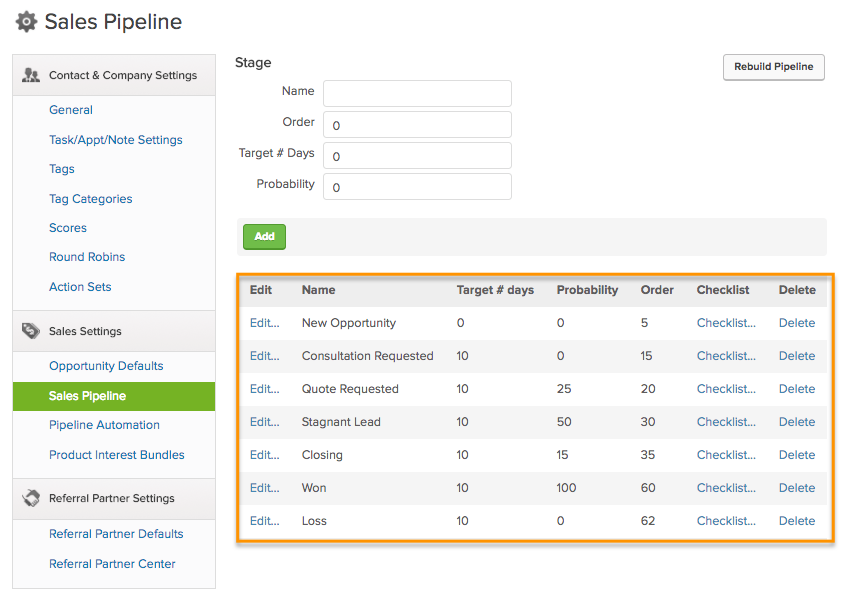
Each stage of your pipeline has an “order”. The order controls where it fits in your pipeline. If your pipeline stages are ordered between 1 and 100 (mine are between 5 and 62 above), then when you need to build your second pipeline, you’ll want to set the order for those stages between 100 and 200, or something like that.
Once you’ve added the stages for your second pipeline, then your pipeline should look something like this. You’ll also notice that I basically duplicated the first set of stages, but simply added 100 to the original “order”.
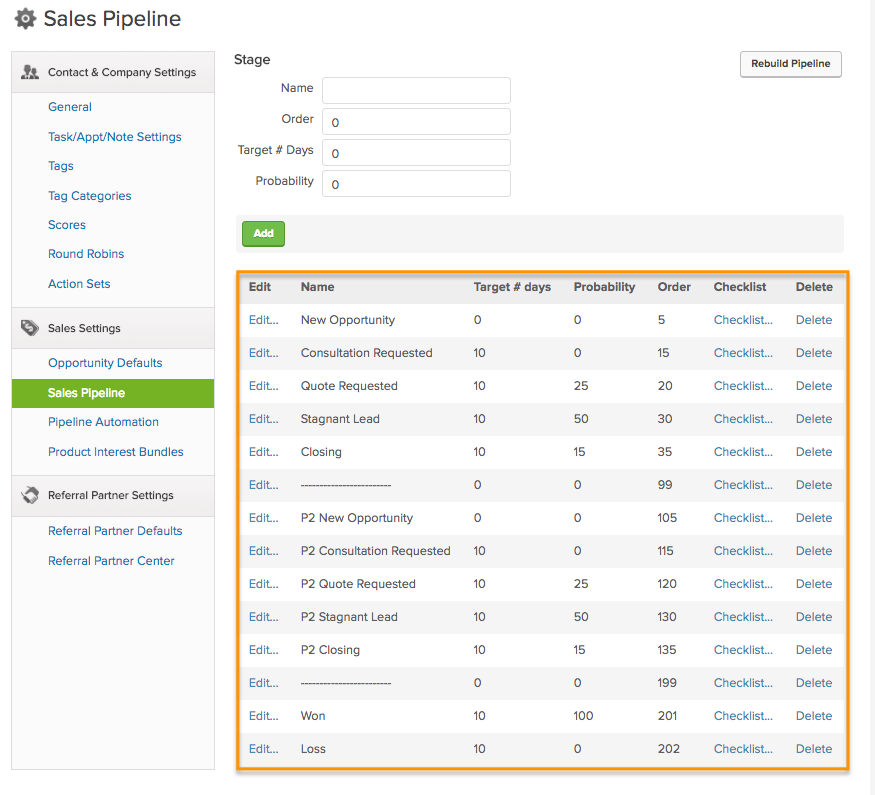
Now, let’s look a little more closely at this. I want you to notice a few different things. First, you’ll see that I’ve added two stages (highlighted in green) as dividers. These stages don’t serve any functional purpose, they’re just there to help me visually separate my two distinct pipelines.
The second thing I want you to notice is the stages of the second pipeline (highlighted in orange) all have the prefix P2. This is my designation that they’re part of Pipeline 2, but you easily use your own internal acronym (for whatever that product or service might be, etc).
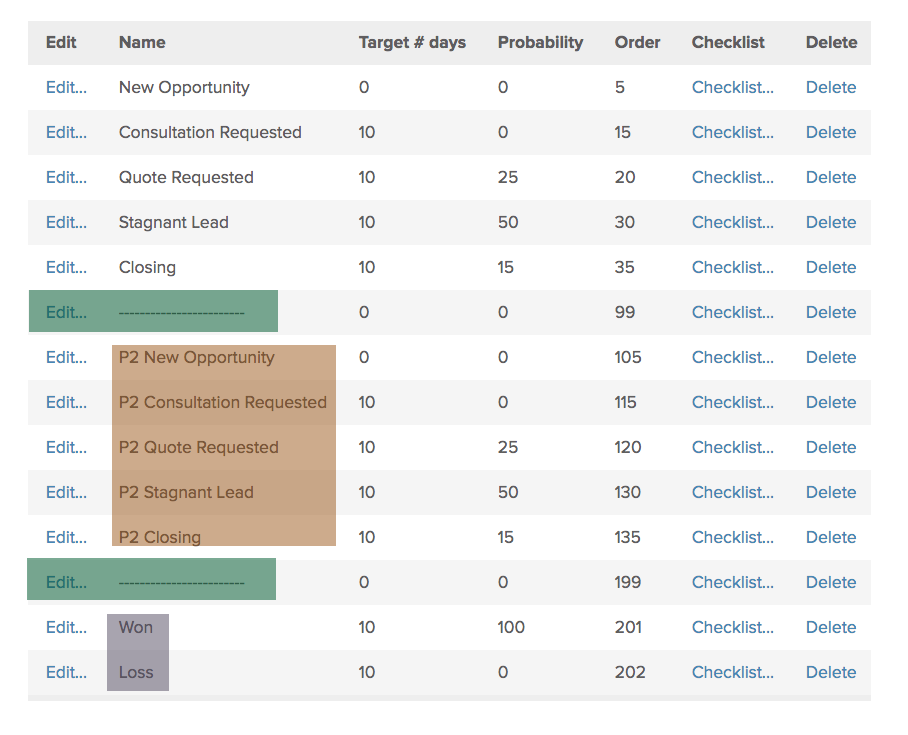
And the final thing to point out (highlighted in purple above), is that there is only one set of Won/Loss stages. Keap, by default, only allows you to define one stage for your “Won” and one stage for your “Loss”. But generally, these are the end of your pipeline anyway, so that may work just fine. If you are requiring won or loss reasons, just make sure that you have the right options for both (or all?) of your pipelines.
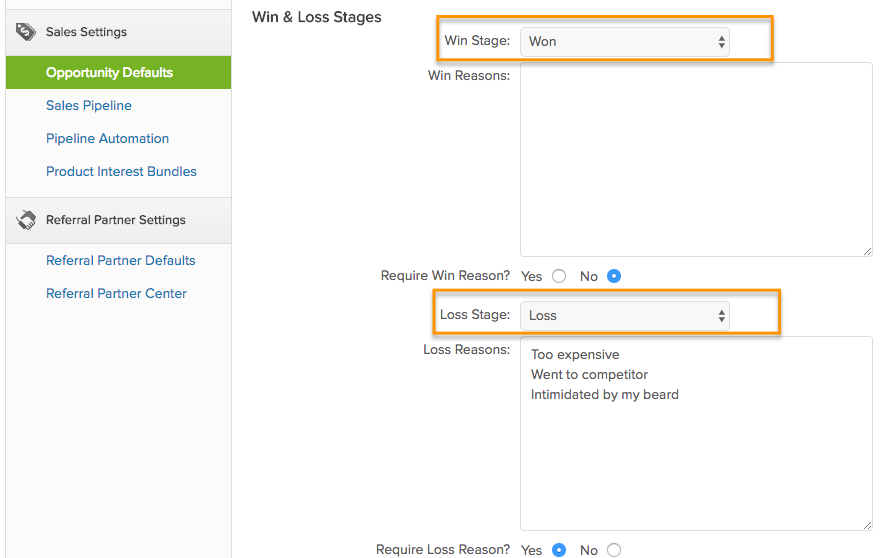
Other Considerations
So, you can set up as many pipelines as you like. Right? You can stack them over and over, and each will operate independently.
However, this isn’t naturally how the pipeline was designed, so you may experience some challenges if you’re using it this way. I want to give you some tricks for making sure you are able to successfully navigate those hurdles.
Tip 1: Apply unique tags when someone is active in one of your pipelines. So, when an opportunity record is created in stage P2 New Opportunity, apply a P2 Pipeline tag. This tag will allow you to easily filter the Opportunity Reports so you can use them to look only at results and metrics for that particular pipeline.

(Note: Watch out for situations where someone could be in more than one pipeline at the same time! You may need to get creative with your report criteria to make sure you’re including and excluding the right folks.)
One more tip…
Tip 2: There is a Pipeline stages widget you can add to your dashboard. Once you add it, you can configure the different stages it will display – and here’s the trick, you can add this widget more than once. So feel free to add one widget for each of your unique pipelines.
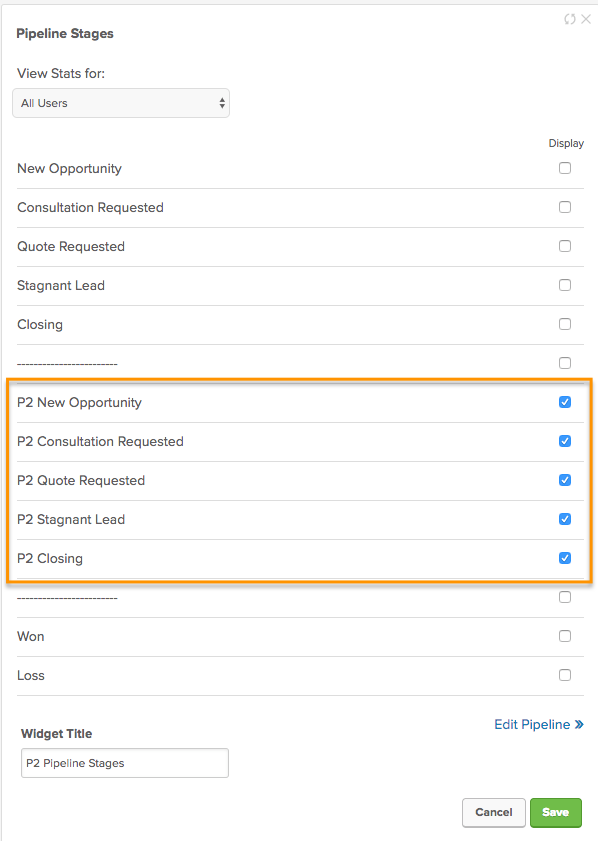
And finally…
Tip 3: Because we only have one Won and Loss stage, if you plan to trigger automation with either of those stages, you’ll want to make sure you have things set up so that the right automation is triggered based on which pipeline the prospect came through before they reached the Won stage. Here’s how I’d handle this:
I hope you found these suggestions valuable, and feel comfortable building yourself one, two, or as many pipelines as your business needs.
If I overlooked something, or you’ve tackled this problem in other ways, please leave a comment and share your thoughts!

